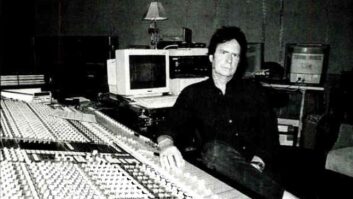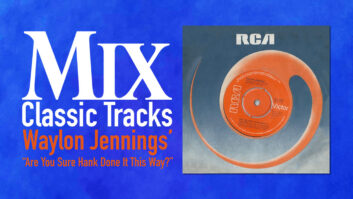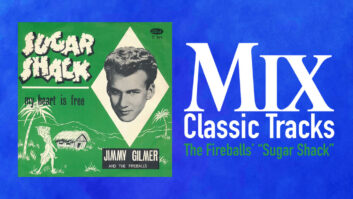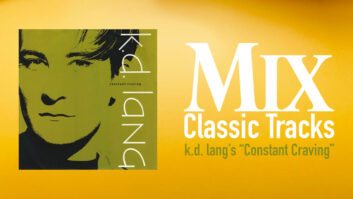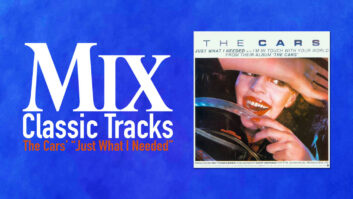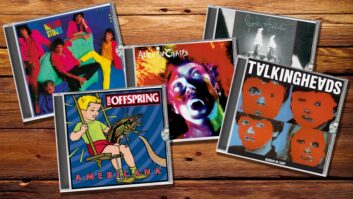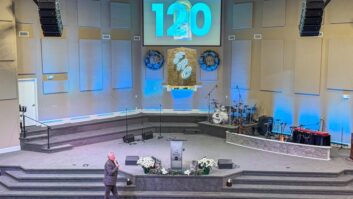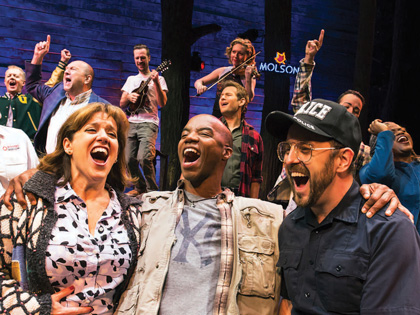
The modestly scaled Broadway musical Come From Away arrived this past March with no stars, unknown writers and a cast of normal looking people. Usually, stars, sizzle and known properties rule on ultra-competitive and costly Broadway, so such drawbacks could have easily doomed an original show about 9/11 and its aftermath. Yet, Come From Away, now playing at the 1,080-capacity Gerald Schoenfeld Theatre, is grossing a million dollars-plus weekly and runs at more than 100 percent of seating capacity, a distinction shared by behemoths like Hamilton.
Come From Away seems nearly guaranteed a long run. And its timing during the current political climate may be a big part of its success: “Try, if you must, to resist the gale of goodwill… of Come From Away… a tale of an insular populace that doesn’t think twice before opening its arms to an international throng of strangers,” raved the New York Times.
Come From Away was nominated for seven 2017 Tony Awards and won for Best Direction (Christopher Ashley). The show limns but a slice of the vast 9/11 drama: When the FAA ordered every plane flying to land at the nearest airport and no flights were allowed for five days. Suddenly Gander, Newfoundland (a small northeastern Canadian island town), had 6,500 brand-new people deplaning from 38 grounded jetliners; many were heading home from Europe. Gander and other nearby towns strained mightily to house and care for this group that nearly doubled the population on a moment’s notice. Cultures clashed and, ultimately, deep friendships were made. Onstage, 12 actors and eight musicians transform this awkward situation into 100 lively minutes of powerfully moving song and dance. The small cast portrays the equally gobsmacked locals and the “come from aways” and switches back and forth rapidly, often within one musical number. (Each cast member is credited as their main character “and others.”)
This hectic theatrical mashup, and the barrage of nonstop dialog and song that goes with it, is the show’s biggest audio challenge, says sound designer Gareth Owen (who won a prestigious Outer Circle Critics Award for Come From Away). A multitude of rapid changes and effects are facilitated by the Avid Venue S6L desk that Owen says he’s helped develop for theater use by consulting with the company for the past 15 years.
Specifically, because the Avid S6L has Pro Tools/HDX cards in the audio engine itself, a host of DSP plug-ins can be integrated directly into the system and elegantly programmed into a show, with full recall. Owen also makes extensive use of the Futzbox plug-in, in its Broadway debut, for rapid changes to a variety of distorted sounds such as airliner P.A. systems, pilot radio transmissions and a host of others.
“It is all about workflow; getting the desk to do what you need quickly without having to wrestle with it. Avid can do it instantly. I never think about it and it never gets in the way.” For example Jenn Colella, in a featured part as American Airlines’ first-ever female captain, does “three different accents in her first five minutes, requiring three different EQ and compression settings” to be executed quite quickly.
The S6L’s Snapshot recall feature makes fast work of it all. “You create momentary snapshots that can be recalled repeatedly at any time, without pulling you out of position in the cuelist,” Owen says. “This means you can create three cues, each with just EQ for a specific character, and then recall them as the actor changes characters.”
Still, with a complex show like this, even a state-of-the-art desk needs a highly skilled operator to succeed. “The biggest challenge here is the operator’s,” says Owen. “It really is about working line by line, mixing dialog and music thick and fast. The pure number of cues involved to get every last bit of clarity takes an awful lot of faders being pushed and pulled [very quickly, throughout].”
The actors deliver a multitude of crucial but terse storyline snippets with lightning speed, so in addition to all the compression and EQ changes for the character shifts, the operator has to open, and then close, a host of RF mics extremely fast, to ensure absolute clarity and intelligibility.
This is essential because the audience has one chance to grasp a slew of key story elements, many delivered over upbeat, loud-ish music. Miss a few key points and one might be befuddled rather than entertained. At Come From Away, audiences are clearly being entertained and emotionally moved.
This dextrous, rapid-fire fader riding continues nonstop throughout the 100-minute show. “I’m constantly pulling faders, shutting off one mic and turning on others, literally line by line. And then suddenly there’s a lot of complex music blending. It does not stop,” says sound engineer Chris Luessmann, adding that having worked six Come From Away performances per week since the show opened, he can now run the desk sans script.
As with the Avid desk, Owen knows what he wants from his P.A. The main loudspeaker system is all from d&b audiotechnik: a mix of their V, E, Y and T Series point-source units. There are 10 V, B and J Series subs as well, several prominently placed in the theater’s elevated side-seating boxes, bringing the total to around 90 speakers.
“For me it’s about picking a speaker that works and using it [consistently],” Owen says. “d&b seems to have a voicing policy where you get fundamen- tally the same frequency balance and voicing out of every speaker, so I can concentrate on the acoustics of the room and the requirements of the show rather than worry about making big boxes sound the same as little boxes.”
All 24 cast foldback speakers are built into the floor and the sides of the stage (all d&B, except for eight small Electro-Voice S40s for wings programming). Extra care went into ensuring that no lines or key story points are lost due to mic failure. Each of the 12 cast members wears two complete RF mic systems; the primary mics are DPA 4066 booms, reaching far across the cheek. The boom also has a Countryman B6 (chosen for its waterproof qualities) custom-mounted next to the DPA capsule.
Every actor wears two Sennheiser transmitter packs, one for each mic. Each transmitter sends its signal to a dedicated Sennheiser receiv- er. But only the main DPA mic is used unless it shorts out from sweat; then the backup mic goes live manually. These backup mics are, in fact, regularly needed on Come From Away. This double-mic approach is standard for Owen, who’s seen its importance dramatically demonstrated. “On Young Frankenstein in London we used all the backup mics at one time or another,” he notes.
The choice of the quite-visible flesh-colored booms instead of tradi- tional Broadway hidden head mics was dictated by the show’s rapid-fire character changes. The cast is constantly changing costumes and hats, often onstage, so no one could help them keep head mics from being covered or jostled.
So the choice was “less for acoustics, but for practicality; it doesn’t hurt the sound,” Owen says. “[Head mics] compromise sonic integri- ty. [With the booms], “there’s more headroom and the vocals are more precise. [With head mics], there’s less clarity, as more foldback, house sound, other people onstage [gets into actors’ mics].”
Also for greater overall clarity, all monitors are all mixed from FOH, rather than from an unmanned desk under the stage, as is Broadway custom. “We have so many people using so many instruments onstage, it made more sense to have total control of foldback signals,” Owen says. This is especially important for the band, who are using both Shure SE315 RF in-ear and Sennheiser headphone monitoring.
The band is onstage, at the sides, and often joins in some rousing center-stage action, so most instruments are on also RF mics/pickups. Surprisingly, the FOH mix position is not at center orchestra-rear, as in nearly every Broadway show; it’s upstairs at the back of the small mezzanine. This is pure“Tens of thousands of dollars are saved every week by not removing premium-priced orchestra seats to make way for FOH,” Owen says.

Come from Away mixer Chris Luessmann at the Avid
Venue S6L control surface, situated on the mezzanine level of the Gerald Schoenfeld Theater. He wears a Gander Flyers hockey Jersey, from when the show was performed in Gander, Newfoundland, where the action takes place.
He’s unfazed by the move, though; his other Broadway show, A Bronx Tale, also has a mezzanine FOH position. “The sound should be as good at back of mezzanine as in the orchestra, so it shouldn’t be a problem,” Owen says. “I fight for best mix position I can get, and the back of the mezzanine was not any worse [than the orchestra]. And when I’m saving the producers that kind of money every week, I can get other things I want that cost less,” Owen notes with pleasure.
In fact, Owen has a special understanding of the economics of live theater; he was once engaged to a producer. “So I know about spending clients’ money responsibly,” he says. “I ask myself, ‘Do I have what I need and nothing more?’ I like to get to opening night and justify everything.”
The right-from-opening-night success of Come From Away has been a rewarding, if sometimes taxing, team effort. The sound of the show is as much a reflection of the passion of the music department and direc- tion as it is of the sound department. The attention to detail from our director and musical supervisor can sometimes be overwhelming, but the end result makes it all worthwhile.”
